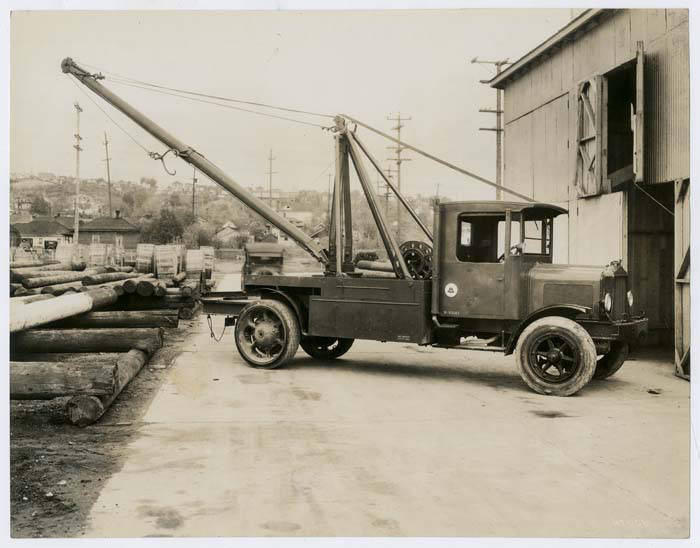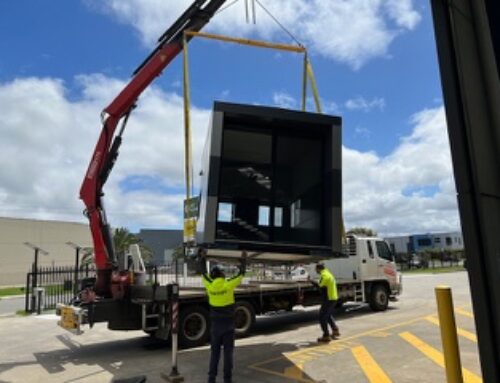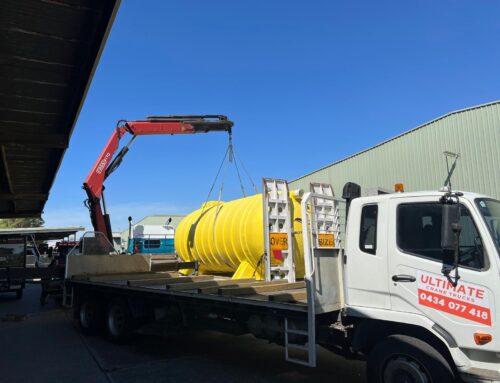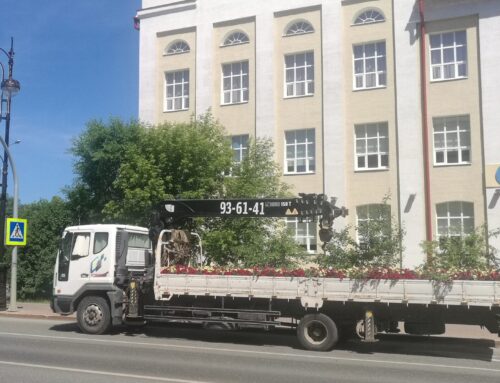A crane truck (or boom truck) has transformed the construction and shipping industries, providing adaptability and mobility that static cranes cannot match. Their evolution has been fascinating through engineering improvements, market demands, and heavy machinery innovation. Understanding the history of boom trucks makes us appreciate these mechanical behemoths, and demonstrates how they continue to evolve to fit today’s needs – the team at Ultimate Crane Trucks sheds some light on its lineage in the industry!
Early Beginnings: The Need for Mobility
The idea of lifting big loads traces to the innovations of our ancient civilisations. The Greeks and Romans built gigantic constructions with crude cranes of wood, ropes, and pulleys. However, these early cranes were fixed, and required many people to operate
The Industrial Revolution in the 18th and 19th centuries introduced steam-powered cranes, which dramatically increased lifting capacities. However, these cranes mainly remained stationary, attached to fixed places. As industries grew and infrastructure projects arose, the need for a mobile lifting solution became clear.
The Early 20th Century
The first crane truck debuted in the early 20th century, around the 1910s. These early variants were simple adaptations of truck chassis with lifting booms. Companies like Manley Motor Truck Company in the United States started experimenting with attaching crane mechanisms to trucks, ushering in a new era of mobile lifting solutions.
During World War I, demand for efficient and mobile cranes skyrocketed. The military needed adaptable tools to handle logistics and infrastructure in war zones. Crane truck technology advanced quickly due to this necessity, resulting in more durable and dependable designs.
Post-War Innovations: Hydraulic Power and New Materials
Significant technological developments occurred during the interwar period and immediately following World War II. One of the most important advancements involved the introduction of hydraulic systems – enabling smoother, more precise movements and increased lifting capacity, owing to the magnification of force from point A to B with a high-density fluid (oil). Companies such as Hiab in Sweden pioneered hydraulic crane trucks in the 1940s, setting new industry standards.
Using high-strength steel and alloys also aided the development of these trucks. These materials supplied the required strength without adding unnecessary weight, enabling larger and more competent cranes. Manufacturing process innovations, such as welding and precision machining, have increased the cranes’ reliability and performance.
The Modern Era: Advanced Engineering and Digital Integration
Boom trucks were continually refined, beginning in the 1970s. Manufacturers aimed to improve safety, efficiency, and versatility – and by the late 20th century, saw the integration of computer systems with digital controllers, which represented a considerable advancement in user experience and accommodation of skillsets. Modern crane trucks use sensors, capacity for automated controls, and telematics systems, allowing operators to operate lifts with precision and safety.
The advent of articulated booms and telescopic arms increased the possibilities for these cranes. These qualities increase crane reach and flexibility, allowing them to operate in limited locations and perform complex lifting jobs. Stabilisation innovations, such as outriggers and counterweight systems, have also increased the cranes’ stability and safety.
The Role of Crane Trucks Today
Today, these technologies are indispensable in numerous industries, including construction, mining, utilities, and logistics. Their ability to move quickly between locations, alongside lifting capabilities to accommodate many tons and reach incredible heights, make for a condensation in logistics that save both time and resources.
Environmental factors have also affected the design of modern boom trucks. Manufacturers are progressively adding environmentally friendly technologies, such as hybrid power systems and energy-efficient hydraulics, to lessen the environmental effects of their machines.
The Future: What Lies Ahead?
Further technological breakthroughs and changing market demands will likely define the future of these cranes. Automation and robotics are expected to play important roles, with fully autonomous cranes potentially becoming a reality. Integrating artificial intelligence (AI) may improve predictive maintenance, operational efficiency, and safety.
Sustainability will also promote innovation. The development of electric and hybrid crane trucks is underway, with the intention of lowering carbon footprints and meeting strict environmental laws. Advances in material science may enable the development of even lighter but stronger crane components, improving performance and fuel efficiency.
Why Choose Ultimate Crane Trucks?
Ultimate Crane Trucks is committed to offering high-quality crane truck rentals and services that fulfil our clients’ diversified needs. Our fleet includes cutting-edge cranes with the latest technology, ensuring safe, efficient, and reliable operations for any project. Whether you require a crane for construction, logistics, or specialised jobs, we have the experience and equipment to complete the job.
Contact us today to find out how our services can help with your next project. Let’s take your business to new heights together!







Leave A Comment